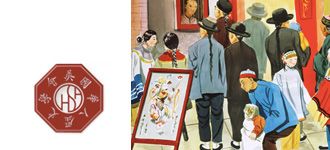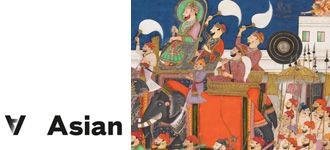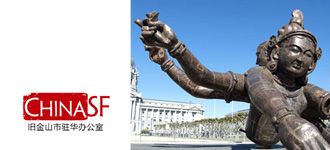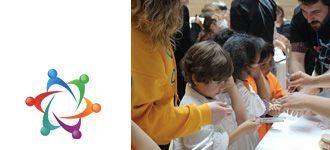Chinese Historical Society of America Honors Achievements of Chinese American Luminaries

Chinese Historical Society of America Honors Achievements of Chinese American Luminaries at Voice & Vision Gala
30 September 2011 – San Francisco, CA: The Chinese Historical Society of America (www.chsa.org) honored the achievements of three outstanding Chinese Americans at a gala dinner on September 17, 2011, at the Four Seasons Hotel in San Francisco. The “Voice & Vision Gala: Honoring the Spirit, Fortitude, & Enduring Legacy of Chinese Americans” gave tribute to San Francisco Mayor Edwin M. Lee, United States District Judge Edward M. Chen, and Attorney General of Hawaii David Louie, whose achievements are significant milestones in Chinese American history. The program featured MSNBC News Anchor and San Francisco Chinatown native Richard Lui as Master of Ceremonies, with musical entertainment by Beach Blanket Babylon cast member Stephanie Harwood, who gave a spirited rendition of “San Francisco.”
Introducing the program, CHSA Executive Director Sue Lee said, “We believe in the importance of sharing our history in our own voice.” Lee described the three honorees, who were roommates during law school, as “emblematic of the generation who were influenced by the activism of the 1960s and 70s.” All three became lawyers and shared a common dedication to public service, achieving positions that impact the lives of thousands of Americans.
Attorney Dale Minami said that the three honorees “were the first generation to study Asian American history because of new programs being developed. They represent a generation of activists, and have become history makers in their own right.”
Honoring Mayor Ed Lee, Senator Dianne Feinstein, speaking via video, said, “Ed Lee understands that public service is about uniting people, not dividing people.”
Greeted with a standing ovation, Mayor Lee said, “The flame still burns in me, one of equity, a belief that lives here still have a value, and that San Francisco is a place where people can succeed. People come here from all over the world to seek a better life. Now every day I have a chance to help make their life better.”
The mayor noted, “The role of the Chinese Historical Society is to document those ancestors of generations who sacrificed just to make a living. As I am honored here tonight I want to return that honor to all you here in this room, because it is your struggles that have allowed me to be here, and so I want to honor the community first.”
Senator Feinstein, honoring Judge Ed Chen, said, “He is a solid, tested, and respected judge.” In 2011 Edward M. Chen was named a Judge on the U.S. District Court for the Northern District of California. Dale Minami said, “Ed Chen has deep belief that we all deserve equal justice and equal dignity under the law.”
Judge Chen, the first Chinese American Article III Judge in the Court’s 150-year history, said in a video introduction, “I felt a need for this court to reflect the full diversity of this community. Some of the most important landmark cases involving the Asian American community have come out of this court.” He particularly noted the historic case of Korematsu vs. the United States, for which Dale Minami was lead attorney.
Accepting the honor from CHSA, Chen said, “I was really motivated in large part by the struggles of the 1960s. I sit on the shoulders of history, as the CHSA teaches us, with its work of educating us about our past so we can better lead in the future.”
U.S. Congresswoman Mazie Hirono of Hawaii introduced David Louie, Attorney General of the State of Hawaii. Louie first acknowledged the presence of Judge Harry Low, and said, “We all know we stand on the shoulders of all those who have come before us.”
Louie said he has been motivated by the challenges and hardships faced by various communities. “What has been terrific,” he said, “is the great number of dedicated public servants like Ed Lee and Ed Chen who work to confront these tremendous problems.” He also appealed to the audience to become more active within their communities, saying, “It’s time to step out of your comfort zone. Please step forward and help.”
CHSA Executive Director Sue Lee closed the program saying, “We take our role as stewards of the Chinese American narrative very seriously. We need to continue telling our stories to the next generation.”
This tradition will continue on the 10th Anniversary of the CHSA Museum Celebration with a spectacular lineup on Saturday, November 12, 2011 from 11 am to 4 pm! Featured performances will include:
11 am Opening Ceremony Lion Dance by Kei Lun Martial Arts
12 noon Chinatown Miniatures Presentation by Artist Frank Wong
1 pm History Alive! “Uncle Toisan” Performance by Artist-in-Residence Charlie Chin
2 pm “Honoring Him Mark Lai” Musical Presentation by Francis Wong Unit
All artists, performers, & musicians are open for audience discussions following their presentations. Museum Admission is FREE during the month of November & December in celebration of the anniversary. This initiative is proudly sponsored by PG&E.
Founded in 1963, CHSA is the oldest and largest organization in the country dedicated to the documentation, study, and presentation of Chinese American history. Through exhibitions, publications, and educational, public programming, CHSA promotes the contributions and legacy of Chinese America. In 2001, the Chinese Historical Society of America Museum opened in the landmark Julia Morgan-designed Chinatown YWCA building at 965 Clay Street.






